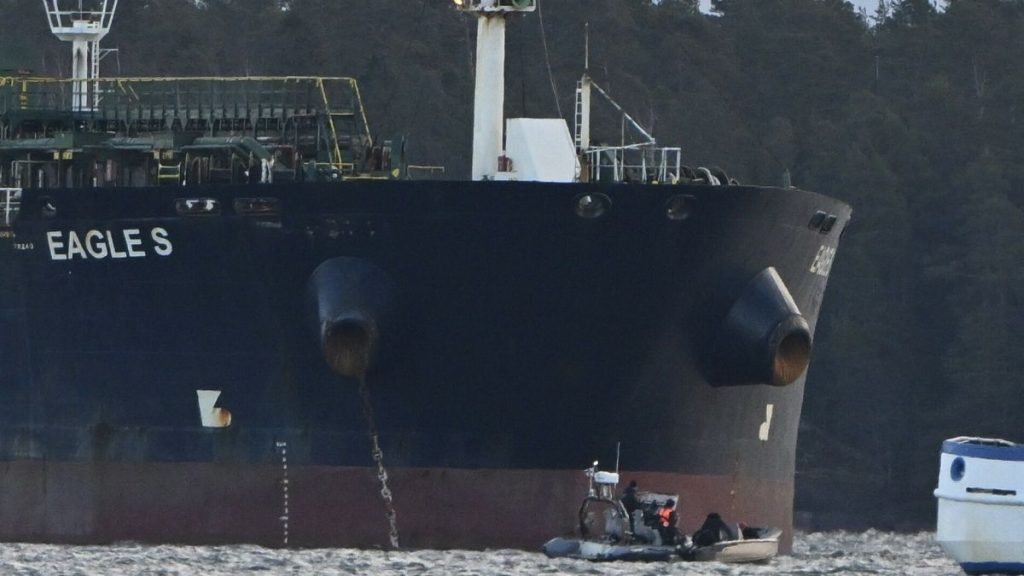The incident involving the Eagle S tanker and the Estlink-2 power cable underscores the escalating tensions and vulnerabilities in the Baltic Sea region. On Christmas Day 2023, the Estlink-2 power cable, a crucial energy link between Finland and Estonia, experienced an outage. Subsequent investigations revealed that the cable had likely been damaged by the Eagle S, a tanker suspected of dragging its anchor across the seabed. Finnish authorities swiftly responded, boarding the vessel, detaining its crew, and launching a criminal investigation. While the power outage caused minimal disruption to services, the incident raised significant concerns about potential sabotage and the security of critical infrastructure in the region.
The Eagle S, flagged in the Cook Islands, has been identified as part of Russia’s “shadow fleet.” This fleet consists of aging tankers, often with opaque ownership structures, used to transport oil and gas in circumvention of international sanctions imposed on Russia following its invasion of Ukraine. The use of these vessels raises concerns about potential environmental disasters due to their age and often unclear insurance coverage. The incident involving the Estlink-2 cable comes amid a series of similar incidents affecting undersea infrastructure in the Baltic Sea, heightening anxieties about deliberate sabotage and the vulnerability of vital energy and communication links.
Finnish authorities detained eight of the Eagle S’s 24 crew members on suspicion of involvement in the cable damage. The investigation aims to determine who was responsible for navigating the ship at the time of the incident and whether the damage was intentional or accidental. While the initial number of detainees was eight, authorities emphasized that this figure could change as the investigation progresses and more information emerges. The incident prompted high-level discussions and reassurances from Finnish President Alexander Stubb, who asserted that the situation was under control and that Finland and Estonia had requested additional support from NATO.
The incident involving the Estlink-2 cable follows a pattern of similar incidents targeting undersea infrastructure in the Baltic Sea. In November 2023, two data cables connecting Finland to Germany and Lithuania to Sweden were severed. While the cause of these incidents remains under investigation, German authorities suspected sabotage, further raising concerns about deliberate attacks on critical infrastructure. The most prominent incident was the September 2022 explosions that damaged the Nord Stream pipelines, which transported natural gas from Russia to Germany. These explosions were widely attributed to sabotage, prompting investigations and heightened security measures around undersea infrastructure.
The series of incidents, including the damage to the Estlink-2 cable, has prompted NATO and its allies to increase their military presence in the Baltic Sea region. NATO has deployed additional maritime patrol aircraft, long-distance radar planes, drones, and minehunters to enhance surveillance and reconnaissance capabilities. Finland, which shares a long border with Russia and joined NATO in 2023 following Russia’s invasion of Ukraine, has been particularly sensitive to these security threats. The increased NATO presence reflects the growing concern about the vulnerability of critical infrastructure and the potential for further incidents in the region.
The incident involving the Eagle S and the Estlink-2 power cable highlights the complex geopolitical landscape of the Baltic Sea region and the potential for escalating tensions. The use of Russia’s shadow fleet, the suspected sabotage of undersea infrastructure, and the increased NATO presence all contribute to a volatile environment. As investigations continue, the incident serves as a stark reminder of the importance of safeguarding critical infrastructure and the need for international cooperation to address security threats in the region. The incident also underscores the vulnerability of undersea cables and pipelines, which are essential for energy supply, communication, and data transfer, and the potential for disruption or sabotage to have significant economic and societal consequences.














